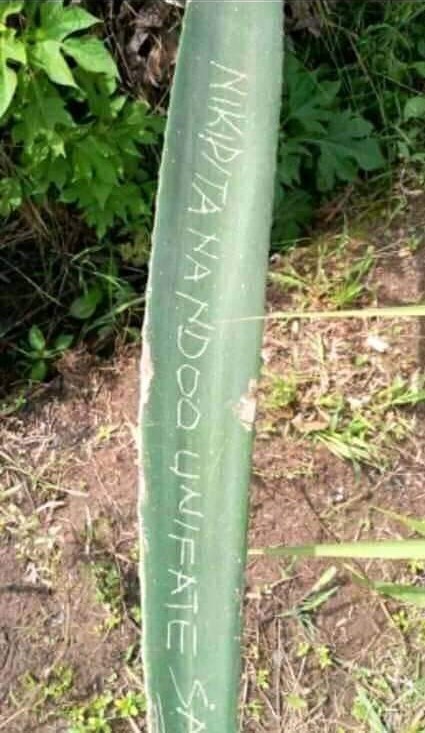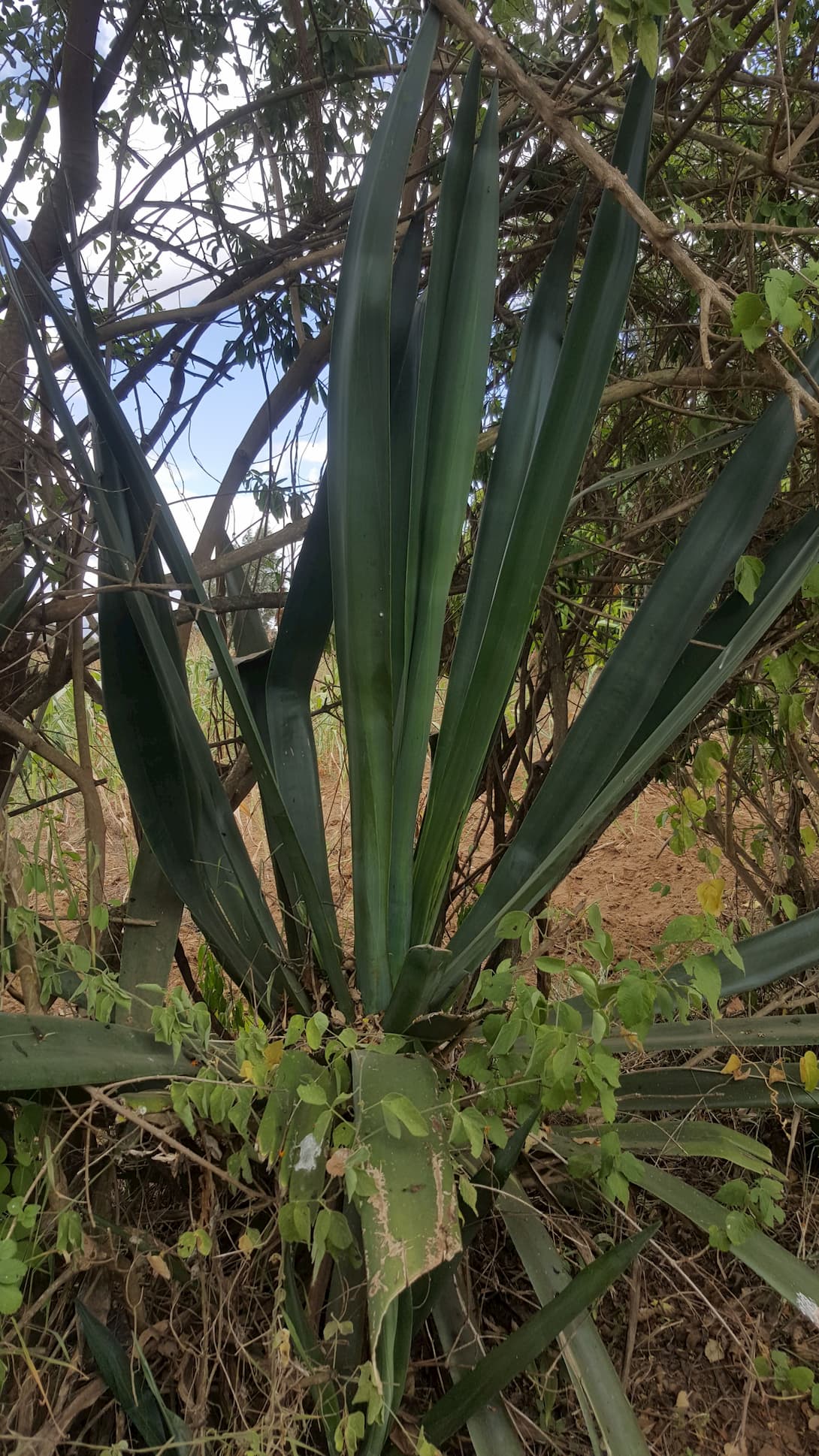From mattresses to drums, 10 unique uses of the sisal plant, likongwe, in Luhya culture.
Making sisal ropes from the sisal plant, likongwe, in Luhya culture
Begun with the cutting the larger mature sisal leaves. The cut leaf would then be placed upside down, with its cut edge first, atop a rock with a cutting edge or the sharp edge of a panga or jembe.
Using one’s foot to apply pressure on the leaf, with stripping action, the leaf is repeatedly pulled away by it’s narrower end.
This was tedious work requiring some skill and with a fair share of thorn pricks. As a result, few undertook sisal making as a vocation.
The village message board / equivalent to sliding into DMs
There is a viral image. “Nikipita na ndoo nifuate” reads an inscription – made no doubt using the spike of a sisal leaf.
In the version of the image that I have seen, the name signature of the author of the message in Swahili is partly hidden. (See image). That said, for our proposes, allow us to her Tsindoli.
In the message, Tsindoli informs her suitor of her availability on her way to the river carrying a plastic bucket to fetch water.
Growing up Luhya in the 80’s and 90’s the succulent leaf of likongwe served such purpose:
To declare love,
to diss a bully,
make an announcement of public interest such as ‘it is so and so who has impregnated whoever’,
to gossip,
and to tag our names as thorn graffiti artists across these murals of the village.
Liwa likongwe-the surgeon’s spiky tool to remove jiggers
Jiggers, chinyende in Bukusu and tsingende in Maragoli, as we mushroomed in the village, were much a menace. To cure the problem, khumala the house with cow dung worked for prevention, to cure the problem, liwa likongwe was the go to tool.
There would be no anesthesia just a bite of the tongue and a ‘surgeon’ not put off by the sight of the gross. The liwa likongwe, terminal spike of a sisal leaf, would then be used to probe sites on the body suspected to have jiggers.
The mercurial likongwe in Luhya culture: Likongwe Kamasiotiokhela
Firewood from the dry leaf of sisal plants.
Construction: Kumurura
The trunk of the sisal plant that is used as a pole during construction of the traditional Luhya home.
Boundary
In similar way to kinagosi common among the Maragoli, among the Bukusu, likongwe was traditionally used as a beacon in land demarcation.
A symbol of manhood
Along it use to demarcate boundaries, the hardiness and longevity of the sisal plant in Luhya culture is symbolic of manhood/ the boy child, in particular as regards to land ownership and tenure. Unlike a daughter who is married into other people, a son is like a likongwe – remains rooted among his people.
Therefore, the birth of a son tethers a woman among a people, making divorce almost impossible in Luhya culture.
Beehive
Made from the hollowed rhizome of the sisal plant.
Drum
Slap a dry hide on top of the hollowed rhizome of the sisal plant, tune it and you have one hell of a drum to dance to.
Kumutoo Bukoko
Pulp waste from sisal leaves was commonly dried in the sun and used to make mattresses – kumutoo (mattress) bukoko (sisal). Often this dry pulp was stuffed into a casing made from old clothes or gunny bags. The gunny bags themselves being disused ones from coffee farming.
Nikipita na ndoo unifate


